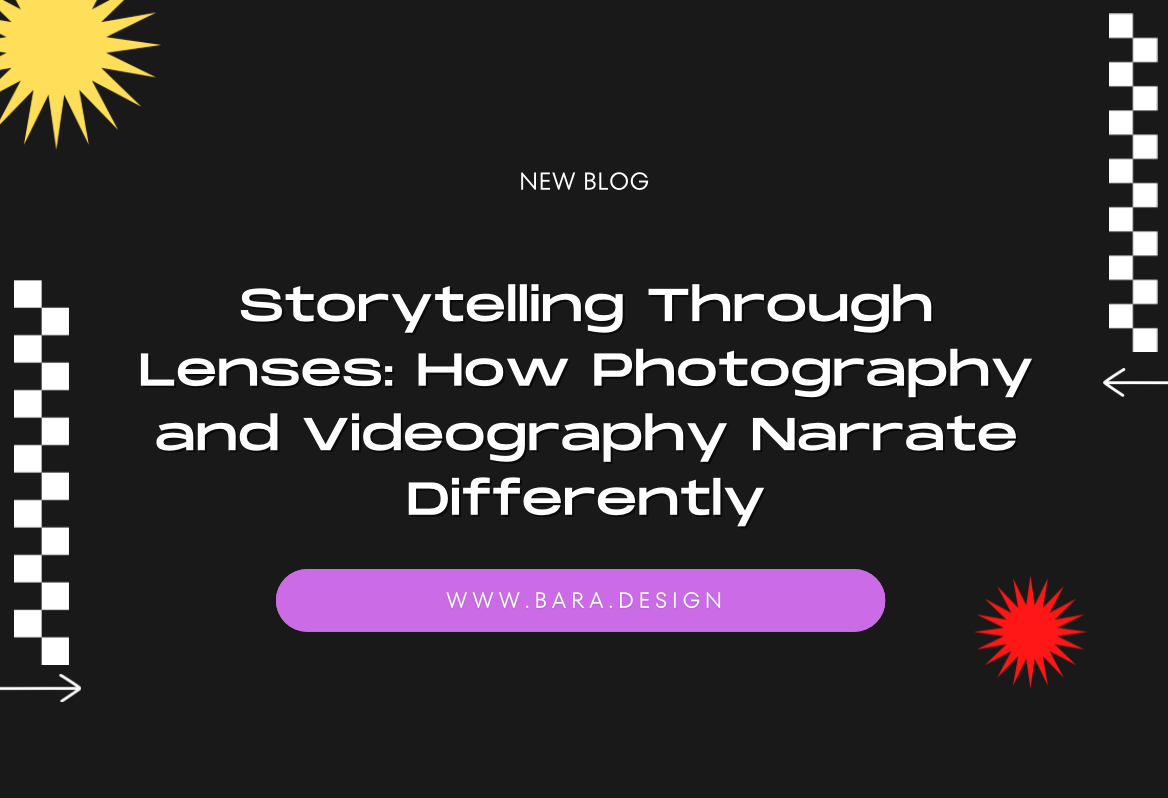In the world of visual arts, the power of storytelling can be harnessed in multiple ways, but none more profoundly than through photography and videography. These two mediums, while similar in using cameras to capture moments, narrate stories uniquely, engaging audiences in their distinct ways. This blog explores the nuances of storytelling through both photography and videography, helping enthusiasts and professionals alike understand the intrinsic differences and advantages of each.
The Snapshot vs. The Sequence
Photography is an art form that captures a moment in time. Each photograph is a frozen snapshot that tells a story through composition, lighting, and subject matter. The magic of photography lies in its ability to convey a powerful message in a single image. Photographers must skillfully use elements like focus, depth of field, and perspective to evoke emotions and narrate a story without the benefit of movement or sound.
On the other hand, videography tells a story through moving images. It combines the visual element with both sound and time, providing a multidimensional storytelling platform. Videographers have the advantage of developing characters, building narrative arcs, and creating tension over time, much like a movie director. The dynamic nature of video allows for a more detailed and prolonged exploration of subjects, making it ideal for stories that require context and progression.
The Art of Composition and Timing
Photography requires a keen eye for composition. The rule of thirds, leading lines, and symmetry play crucial roles in creating visually appealing photographs. Each element must be meticulously arranged to capture the essence of a story in one frame. Timing, too, is critical in photography. The decisive moment, a concept made famous by photographer Henri Cartier-Bresson, is that split second that captures the essence of a situation, often revealing a deeper truth within the shot.
Videography, while also benefiting from knowledge of composition, relies heavily on timing in the form of pacing and scene selection. The flow of a video—from slow-motion effects to the rhythm of scene changes—affects how viewers perceive the story. The inclusion of elements such as interviews, voiceovers, and ambient sounds further enriches the narrative, providing a more layered and complex storytelling experience.
Emotional Impact and Viewer Engagement
The emotional impact of a powerful photograph can be immediate and profound. A single image can evoke a spectrum of feelings, depending on its content and the viewer’s personal connections to the themes it portrays. Photography’s strength lies in its simplicity and directness, often leaving a lasting impression with just a glance.
Videography engages its audience differently. It can manipulate emotions over time through storytelling techniques like music, dialogue, and plot development. Videos have the ability to build empathy and connect with the viewer on multiple levels, as they combine visual elements with sound to create a more immersive experience.
Conclusion
Both photography and videography offer unique opportunities for storytelling, each with its own set of tools and techniques. While photography captures an instant laden with meanings, videography unfolds a story over time, offering a more comprehensive view of the subject. For artists and creators, choosing between these two mediums depends on the story they wish to tell and the impact they aim to achieve.
In today’s digital age, understanding the distinct narratives that photography and videography can weave is essential for anyone involved in the creative process of storytelling. Whether you are a budding photographer, an aspiring videographer, or simply a lover of the arts, appreciating these differences enriches your engagement with the world of visual storytelling.





